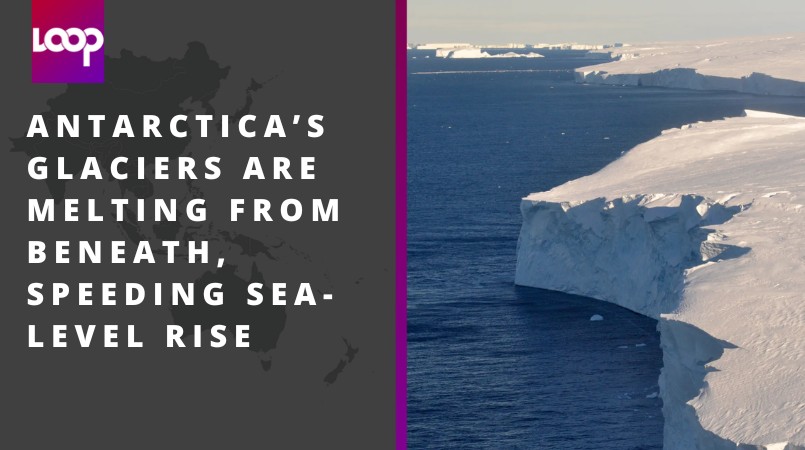
Hidden rivers of meltwater are decaying Antarctica’s glaciers from beneath, a new study has found — meaning sea levels are likely rising faster than scientists had feared.
The faster melting rates are also changing the balance of freshwater and saltwater in the oceans, affecting both ocean circulation and global weather in unknown ways, according to findings published Friday in Science Advances.
The study focused on two Antarctic glaciers — which collectively hold enough water to raise global sea levels by 5 feet.
Scientists have long known that Antarctica’s Denman glacier — like many across the once-vast icelands of the polar regions — was melting from beneath.
But what was less clear was whether that would have an impact on sea level rise, scientists from the University of California, Irvine, said.
In 2021, the research team realized that Denman was melting much faster than the neighboring Scott glacier, despite the fact that both jutted out into oceans of virtually identical temperatures and levels of salinity.
The reason for the change, they found, was that Denman was thawing from beneath at rates faster than unexpected.
As that process accelerates — and begins to take hold in the neighboring Scott glacier — the study found that it will drive global sea levels up by 15 percent more than anticipated.
That’s equivalent to about a sixth of an inch by 2300, in what researchers called a “conservative estimate.”
That may not sound like much on its own — but it comes on top of the melting from fossil fuel burning, which will lead to about three-quarters of an inch of sea-level rise from the Denman and Scott glaciers alone.
All told, the scientists estimated that in a world where fossil fuel burning isn’t controlled, total rise from just these glaciers would be 0.86 inches.
Denman isn’t the only glacier melting from both sides.
For example, the massive Thwaites glacier — an Antarctic glacier the size of Florida whose precarious state has earned it the nickname of “the doomsday glacier” — is also melting from beneath, according to a study published in February.
Scientists have long known that reasons for the slow collapse of all these glaciers differ between their tops and bottoms.
Up top, the glacial melt is occurring for a familiar reason: global heating caused by the uncontrolled burning of fossil fuels.
This is the key factor in ice sheet loss, emphasized study coauthor Jamin Greenbaum, a researcher at the Scripps Institution of Oceanography.
“If there is a doomsday story here it isn’t subglacial discharge,” Greenbaum said.
“The real doomsday story is still emissions, and humanity is still the one with its finger on the button.”
But that doomsday story is being swept along by a very different process of thawing from beneath the ice.
Where the ice meets the bedrock, it can be warmed by the geothermal heat put out by the Earth itself, which only needs to be a hair more than 32 F to cause ice to dissolve.
Then there is friction, as the grinding of slow moving ice against rock generates heat that melts the ice.
This melting is particularly significant where the rivers of meltwater have a chance to reach the sea, where they churn up warmer saltwater and accelerate the process of glacial collapse.
That’s a particular concern when this melting river mouth spills out beneath an ice sheet — the floating part of a glacier that extends out to sea — potentially creating a feedback loop of collapse that will lead to sea levels rising at even faster rates than those anticipated in the study published Friday.
Researchers said that such feedback loops were beyond their ability to model. “We can’t yet say how much sea-level rise will be accelerated by this process,” Greenbaum said.
